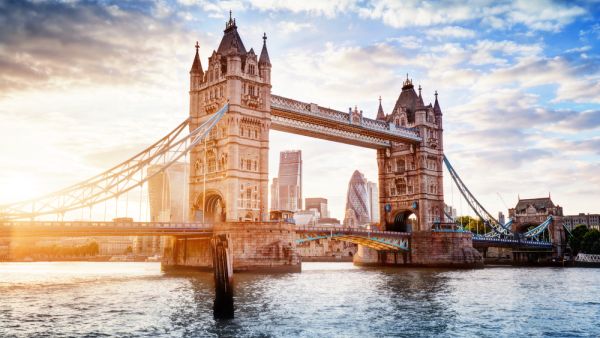Tower Bridge has reopened to motorists 12 hours after it became jammed forcing engineers to work through the night to avoid morning rush-hour chaos.
The bridge's arms, known as bascules, became wedged upright after being opened at 2.15pm yesterday for a Jubilee Trust Tall Ship to pass beneath it.
Images taken from the scene showed traffic built up on both sides of the 127-year-old bridge, which is owned, funded and managed by the City of London Corporation.
City of London Police urged the public to avoid the area, saying the iconic landmark has been closed to traffic and pedestrians due to a 'technical failure'.
Technical fault leaves Tower Bridge stuck openhttps://t.co/wAcIr0gH0Q pic.twitter.com/IOInCp6aAt
— ITV London (@itvlondon) August 9, 2021
Workmen battled through the early hours to fix the fault and it finally reopened at 1.45am - around 12 hours from when the fault occurred.
In August last year, the bridge was closed to vehicles for over 24 hours because of a 'mechanical fault' which also saw the arms fail to close.
The bridge, which took eight years to build and opened in 1894, opens about 800 times every year.
A spokesperson for the City of London Corporation said investigations into why the failure occurred are currently taking place, though a reason has yet to be found.
It is not the first time that the iconic crossing has suffered a technical fault.
In 2020 the famous bridge failed to close after allowing a ship to pass along the River Thames, leaving queues of motorists and pedestrians waiting for at least an hour from both directions.
And in 2005 police closed the bridge for ten hours after a technical problem prevented the arms from being lowered.
Well, this is awkward. I knew scheduling videos in advance would catch me out one day, but I didn't expect it to be this one. Apologies to the Tower Bridge team, that could have been timed a lot better. https://t.co/31kuKoPO96
— Tom Scott (@tomscott) August 9, 2021
The suspension bridge, which is also a popular tourist attraction, directly connects the Square Mile financial district to Southwark.
Each of its bascules weigh more than 1,100 tons each with a 400 ton counterweight to help them descend after lifting to allow river traffic to pass through.
This article has been adapted from its original source.








